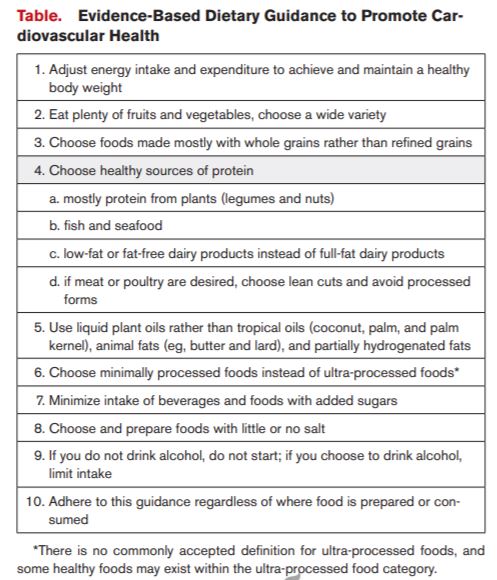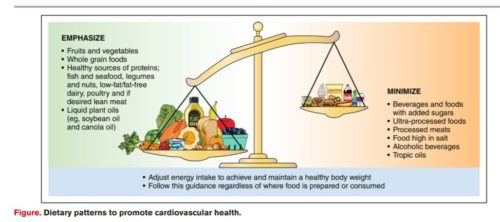I’m on the visionary panel. To register, click here.

The American Heart Association (AHA) has just issued its latest set of dietary guidelines aimed at preventing the leading cause of death in the United States: 2021 Dietary Guidance to Improve Cardiovascular Health: A Scientific Statement From the American Heart Association.
Because AHA guidelines apply not only to coronary heart disease but also to all other chronic disease conditions—and sustainability issues—influenced by dietary practices, they deserve special attention.

Most of these repeat and reinforce the 2020-2025 Dietary Guidelines for Americans.
The two big differences in the recommendations:
These recommendations are way ahead of the US Dietary Guidelines in recognizing how much ultra-processed foods contribute to poor health, and how important it is to minimize their intake.
Also unlike the US guidelines, these are unambiguous and easily summarized.

The statement is worth reading for its emphasis on two other points.
The press release summarizes the problems in society that make following healthy diets so difficult, if not impossible:
As the statement concludes: “Creating an environment that facilitates, rather than impedes, adherence to heart-healthy dietary patterns among all individuals is a public health imperative.”
Amen to that.
Comment: From my perspective, this statement thoroughly supersedes the 2020-2025 Dietary Guidelines for Americans, which—because they say nothing about ultra-processed foods , differential protein sources, sustainability, or doing anything to counter societal determinants of poor diets—were out of date the instant they appeared.
Some of the details of the AHA statement will be debated but its overall approach should not be.
The committee that put these guidelines together deserves much praise for basing its advice on today’s research and most pressing societal needs.
Additional AHA Resources: